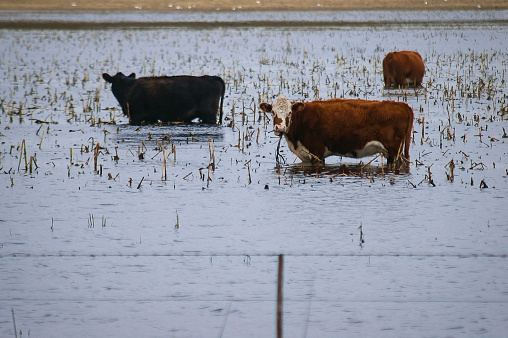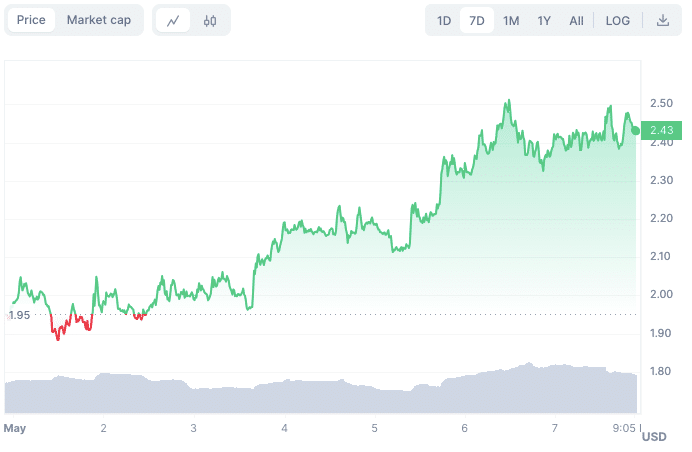Protecting Livestock From Flood Damage: Practical Strategies

Table of Contents
Pre-Flood Planning and Preparation
Proactive planning is the cornerstone of effective livestock flood protection. Failing to prepare adequately can lead to devastating consequences during a flood event. This section outlines essential pre-flood preparations to mitigate potential damage and ensure the safety of your animals.
Developing a Flood Preparedness Plan
Creating a detailed and comprehensive flood preparedness plan is the first step towards protecting your livestock. This plan should be specific to your farm's unique characteristics and potential flood risks. Key elements of your plan include:
- Risk Assessment: Identify areas of your farm most susceptible to flooding. Consider historical flood data, proximity to waterways, and terrain features. Map out these vulnerable areas and develop evacuation plans accordingly.
- Evacuation Routes and Holding Areas: Establish clear, easily accessible evacuation routes leading to higher ground or designated safe zones. Secure temporary holding areas with adequate space, shelter, and access to resources. These areas should be easily accessible by farm vehicles or trailers.
- Emergency Response Team: Designate a team of responsible individuals with clear roles and responsibilities during a flood. Include contact information for all team members, veterinarians, and local emergency services.
- Emergency Supplies: Stockpile sufficient emergency supplies well in advance of a potential flood. This includes:
- Ample feed and water for the duration of the emergency.
- Medications for common livestock ailments.
- Temporary fencing materials to contain animals in safe zones.
- First-aid kits specifically designed for livestock injuries.
- Transportation resources: trailers, trucks, etc.
Improving Farm Infrastructure
Investing in flood-resistant infrastructure can significantly reduce the impact of floods on your livestock. These improvements represent a long-term investment in farm resilience and animal safety.
- Elevated Structures: Elevate barns, feed storage areas, and other crucial structures to minimize floodwater damage. Consider constructing elevated platforms for animals to escape rising floodwaters.
- Flood Barriers and Berms: Install flood barriers or berms around vulnerable areas to divert floodwaters and protect buildings and pastures. This can significantly reduce the risk of flooding livestock enclosures.
- Reinforced Fencing: Ensure your fencing is strong and secure enough to withstand the force of floodwaters. Use heavy-duty materials and reinforce weak points to prevent animals from escaping or becoming trapped.
- Escape Routes: Create elevated escape routes or ramps for animals to reach higher ground quickly and safely in case of sudden flooding.
During the Flood
When a flood warning is issued, immediate and decisive action is critical. Your pre-flood plan will guide your actions, helping ensure the safety of your livestock and reducing stress.
Evacuating Livestock
Safe and timely evacuation is paramount to protecting your animals from harm during a flood. Your pre-planned evacuation routes and designated holding areas are essential during this phase.
- Follow Your Plan: Adhere to your pre-established evacuation routes. Ensure all team members understand their roles and responsibilities.
- Safe Transportation: Transport animals to higher ground using trailers or other suitable methods. Prioritize vulnerable animals—young, elderly, or sick animals—for immediate evacuation.
- Calm Herding: Employ calm and efficient herding techniques to minimize stress on animals. Avoid aggressive or forceful methods that could injure or panic your livestock.
- Communication: Maintain constant communication within your emergency response team, and notify relevant authorities of your evacuation progress.
On-Farm Emergency Procedures
If evacuation isn't feasible due to the rapid onset of flooding or other constraints, implement these on-farm emergency procedures:
- Higher Ground: Move animals to the highest available ground within the farm boundaries.
- Secure Housing: Confine animals in strong, elevated structures that can withstand floodwaters.
- Essential Resources: Provide access to clean drinking water and sufficient feed. Regularly check water sources for contamination.
- Constant Monitoring: Monitor the animals' condition closely and provide immediate veterinary care if necessary. Watch for signs of stress, injury, or illness.
Post-Flood Recovery and Care
Once the floodwaters have receded, the recovery phase begins, focusing on animal health, farm restoration, and preventing future flood damage.
Assessing Damage and Animal Health
After the flood, a thorough assessment of both farm infrastructure and animal health is crucial.
- Farm Inspection: Conduct a complete inspection of your farm for damage, including buildings, fences, and pastures. Note areas requiring immediate repair or replacement.
- Animal Health Check: Examine all animals for injuries, illnesses, and signs of stress. Provide veterinary attention to any injured or sick animals promptly.
- Sanitation: Thoroughly clean and disinfect all contaminated areas to prevent disease outbreaks. Remove debris and contaminated feed.
- Documentation: Document all damages and losses for insurance claims and future planning.
Providing Post-Flood Support
Animals require extra care and attention after experiencing a flood. This includes providing appropriate shelter and nutritional support.
- Clean Water and Nutrition: Ensure continued access to clean water and nutritious feed. Monitor feed for contamination and provide alternatives as needed.
- Disease Prevention: Monitor for signs of disease and parasites. Implement preventative measures to minimize the risk of outbreaks.
- Shelter and Warmth: Provide adequate shelter to protect animals from the elements, including potential hypothermia.
- Stress Reduction: Implement strategies to minimize stress and promote recovery, including creating a calm environment.
Conclusion
Protecting livestock from flood damage requires proactive planning, swift action during a flood, and diligent post-flood care. By implementing the strategies outlined in this article, farmers can significantly reduce the risk of loss and ensure the safety and well-being of their animals. Don't wait for the next flood – develop a comprehensive livestock flood protection plan today. Invest in the necessary infrastructure and prepare your team. Remember, proactive livestock flood protection is crucial for sustainable farming and the long-term health of your herd. Implement effective flood prevention livestock strategies now to safeguard your valuable assets.

Featured Posts
-
 Alex Ovechkins Florida Workout Partner Revealed Former Nhl Star Darius Kasparaitis
May 07, 2025
Alex Ovechkins Florida Workout Partner Revealed Former Nhl Star Darius Kasparaitis
May 07, 2025 -
 Middle Management Bridging The Gap Between Leadership And Employees
May 07, 2025
Middle Management Bridging The Gap Between Leadership And Employees
May 07, 2025 -
 Open Ai Ditches For Profit Board Control Plan
May 07, 2025
Open Ai Ditches For Profit Board Control Plan
May 07, 2025 -
 Xrps Strong Performance Outpacing Bitcoin And Other Cryptocurrencies After Sec Action
May 07, 2025
Xrps Strong Performance Outpacing Bitcoin And Other Cryptocurrencies After Sec Action
May 07, 2025 -
 Simone Biles Transition From Gymnastics Whats Next
May 07, 2025
Simone Biles Transition From Gymnastics Whats Next
May 07, 2025
